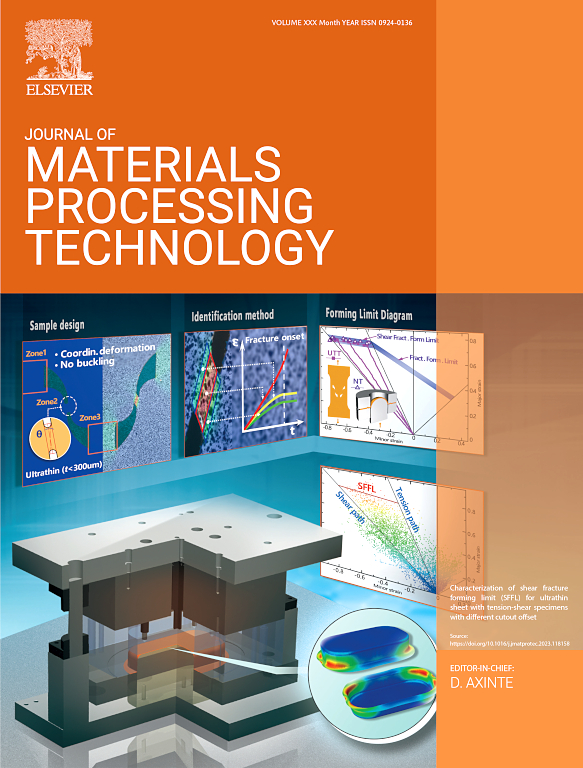Electromagnetic hydraulic blanking flanging integrated process
IF 6.7
2区 材料科学
Q1 ENGINEERING, INDUSTRIAL
Journal of Materials Processing Technology
Pub Date : 2025-01-27
DOI:10.1016/j.jmatprotec.2025.118745
引用次数: 0
Abstract
Electromagnetic forming is a high strain rate forming method, which can significantly increase the forming limit of aluminium alloy. However, there are two problems in the process of hole flanging: (1) sheet needs prefabricated holes, which usually obtained by blanking process. (2) Different shapes of parts need different coil structures; Therefore, the forming process is complicated and the cost is high. Hence, this paper introduces an high strain rate forming method called electromagnetic hydraulic blanking flanging (EMHBF) integrated process. This process combines blanking and flanging in one device, can meet the flanging parts of various shapes and sizes under the condition of not replacing the coil, simplifying the process and reducing the production cost. A multi-physical field coupling model, encompassing electromagnetic and fluid-solid interactions, is also developed to explore changes in liquid flow patterns and the stress state of sheet metal. The influence of die structure (by changing the angle parameters of the die structure, the liquid flow direction can be regulated), discharge voltage, sheet thickness, and flanging part shape on EMHBF forming results is investigated. Variations in die structure lead to differing distributions of liquid pressure on the sheet’s upper and lower surfaces, altering liquid flow patterns and enhancing the sheet’s forming accuracy. An increase in voltage increases the sheet thickness shear stress and blanking velocity, consequently decreasing the blanking burr height. The simulated maximum forming height error was less than 9.0 %, and the maximum thickness error was less than 5.3 %. The EMHBF can meet the needs of different thicknesses and flanging part shapes for a discharge voltage of 8.5 kV. Therefore, this article provides reference rules for designing an EMHBF process. The flanging parts with high forming accuracy can be obtained in the EMHBF device by optimizing the process parameters. The essence of the EMHBF process is guiding the high-pressure and high-speed fluid movement on demand by changing the die structure and discharge voltage. In the future, EMHBF will not be limited to blanking and flanging. The blanking and other sheet deformation behavior can be achieved if the die is designed reasonably.
求助全文
约1分钟内获得全文
求助全文
来源期刊

Journal of Materials Processing Technology
工程技术-材料科学:综合
CiteScore
12.60
自引率
4.80%
发文量
403
审稿时长
29 days
期刊介绍:
The Journal of Materials Processing Technology covers the processing techniques used in manufacturing components from metals and other materials. The journal aims to publish full research papers of original, significant and rigorous work and so to contribute to increased production efficiency and improved component performance.
Areas of interest to the journal include:
• Casting, forming and machining
• Additive processing and joining technologies
• The evolution of material properties under the specific conditions met in manufacturing processes
• Surface engineering when it relates specifically to a manufacturing process
• Design and behavior of equipment and tools.
 求助内容:
求助内容: 应助结果提醒方式:
应助结果提醒方式:


